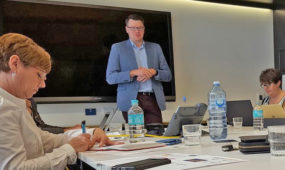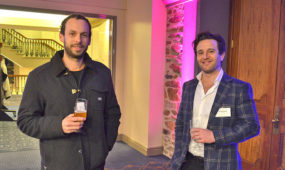How to be a better leader - and help people around you grow
Ideas
Good leaders have a strong effect on the success of an organisation or business. That seems obvious. What might not be so apparent is that a good leader can also change the brains of people around them.

Sign up to receive notifications about new stories in this category.
Thank you for subscribing to story notifications.
Dr Fiona Kerr is a Systems and Neural Complexity Specialist at the University of Adelaide's Entrepreneurship, Commercialisation and Innovation Centre in South Australia.
“What my research has revealed is that leaders of truly adaptive organisations possess a unique set of skills and thought processes, and simply being strong and successful is not an effective basis for leading and shaping an innovative organisation,” Dr Kerr says.
Truly strong leaders are typically pragmatic optimists.
Truly strong leaders are typically pragmatic optimists. They are trustworthy, have the ability to make complex decisions, a high level of self-awareness, are able to regulate their emotions and stress, have good communication skills and combine analysis with intuitive reasoning.
If that doesn't sound like you, don't stress. For a lot of people, these are skills and qualities that can be learned. Dr Kerr's research implies there are three variations of people in this regard: natural, nurtured and never.
“There are people who are naturally complex thinkers, which mean that they just automatically see those connections, they're able to notice more, they're more nuanced in their filters and how they process information. They can take more in,” Dr Kerr explains.
“They build up these good metacognitive skills. Really high level sets of skills for tasks, social and emotional situations.”
“Then there's the nurtured. Most of us are capable of more complex thought – we're capable of building up those schemas, those nets. If you put us in to positions where we deal with complex problems to solve, we'll get better.”
Finally, it seems there's a small sliver of people who are very linear thinkers – they're quite hierarchical in the way they put together their thoughts and ideas. They have strong heuristics, meaning the way they take in information is fairly set.
A leader has the strongest effect on those in the second group – the 'nurtured'. These are people fully able to learn the skills to be effective, deal with complex problems and become leaders themselves.
Maximum creativity comes when there is a boundary, which identifies tangible goals, within which to be creative.
“The way a leader acts has a direct effect, but also what they build, in terms of the environment, the structure, the culture around people that they work in. If I allow you to have more say, to make more decisions, to get more involved in complex problems, you will be faced with more of those complex decisions and you will get better through practice at doing them.”
An example might be an organisation putting together interesting project groups, setting a defined goal but letting the members of that group approach the goal as they see fit.
This should be a high-risk, low-blame environment. There's a chance it results in failure, but the people involved will learn, build their own capability and make the organisation more adaptable as a result.
“Maximum creativity comes when there is a boundary, which identifies tangible goals, within which to be creative. That sort of environment means you're able to optimise people's capability and they really do become more cognitively complex.”
“The way our brain works, we only learn when we do. What you do is actually pattern break those networks in your brain – you make new ones, which means you lay down the information and you've learnt a lesson.”
The unhealthy opposite to that sort of structure is found in very hierarchical, siloed organisations. The only people doing the learning are those in the most senior positions.
Dr Kerr has more than 25 years of business experience in complex organisation strategy across a range of industries, has run a successful consulting business and works as an advisor for governments in Asia and Australia.
This research is the result of 12 years Dr Kerr spent embedded in four organisations. That's three years each – about how long it takes to implement meaningful structural changes.
“These organisations wanted to change. One example was a senior manager that couldn't think like that. It didn't matter what we did, it didn't work out in the end. The other three, they were proactive in changing the structure and encouraging their employees to take it on.”
“People are happy to stay in their own safe space. The best managers are those that push people to improve and take on new challenges, but make their employees feel safe and comfortable at the same time. Not everyone does that.”
The end result – though it takes effort – is a company with the capability to evolve and become more adaptive over time.
“For those wanting to be better leaders, it's important to understand the difference between controlling and steering,” she says.
“Steering allows people to flourish and think more analytically and creatively, while controlling restricts staff – it's about telling and showing people what needs to be achieved but not how to get there.”
For more information on Dr Fiona Kerr and her work, visit her page at The University of Adelaide.
Jump to next article



